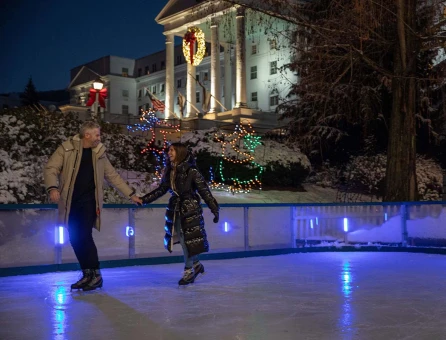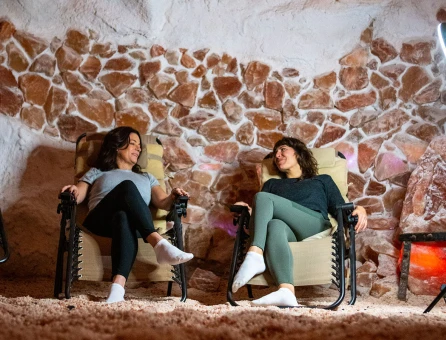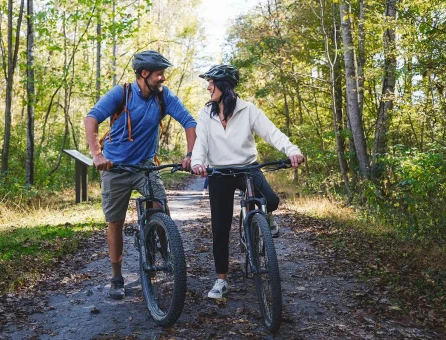Lewisburg has banked on eco-tourism since the days when taking in a mountain view from a veranda—typically with a soothing beverage in hand—counted as outdoor adventure.
The city of 3,800 is just nine miles from the palatial, 710-room Greenbrier Resort, which has been drawing visitors deep into the Allegheny Mountains since 1778. So while some regions are just discovering the advantages of marketing natural beauty, Lewisburg’s corner of West Virginia practically invented the concept, and the city of 4,000 has benefitted for as long as natives such as Kara Dense can remember.
“It’s like a Ford plant for us. It employs 1,600 people and funnels a ton of business through the city. It really is our economic driver,” said Dense, executive director of the Visitors and Convention Bureau of Greenbrier County, home of the city and the resort.
Lewisburg still draws fans of the civilized brand of outdoor recreation associated with the resort, tourists who might follow a float on the gentle Greenbrier River with a spree in the town’s boutiques and upscale restaurants. But the city is increasingly courting more adventurous types, including hardcore mountain bikers, and has found that the two populations are not mutually exclusive. Seekers of adrenaline and endorphins, it turns out, often enjoy capping their conquests with good meals, culture, and the aforementioned soothing beverages.
“The great thing about Lewisburg is that it’s a nice little town with a lot of stuff going on. There’s some old money here with the resort. And it’s got a nice restaurant scene, with people really firing it up,” said Stu Schwab, owner of the Appalachian Bicycle Company, a bike shop in Lewisburg.
But the city is also near the south end of the Monongahela National Forest and accessible to “kayaking, skiing, mountain biking and road cycling,” Schwab said. “To me, Lewisburg has everything. That combination is what makes it so great.”
Schwab, who grew up in West Virginia, returned to the state recently after several years in Asheville. The mountain biking in the “Mon,” he said, stacks up to that of Pisgah National Forest, and it occupies a similarly vast portion of its home state.
“This side of West Virginia is nothing but national forest from here to Davis,” he said, referring to a mountain biking mecca three hours to the north.
But because the town is small and remote, cyclists can feel they have thousands of acres of wilderness all to themselves, which Schwab pretty much did on a recent ride on the Monongahela’s Tea Creek Trail System. This network offers 44 miles of “technical backcountry trails that look like they’re in British Columbia—roots and rocks and super-mossy, super-dense forest,” he said. “When I was up there soloing the other day, I did 17 miles and I ran into one hiker.”
Big challenges are available closer to town at Greenbrier State Forest, featuring 3,280-foot Kate’s Mountain, and the acclaimed Snowshoe Bike Park, where the elevation tops out at 4,848 feet. Road cyclists can not only access miles of quiet and spectacular country roads, but 78 miles of traffic-free riding on the Greenbrier River Trail. Snowshoe, as the name suggests, was built as a ski resort, and anchors the region’s many opportunities for downhill and cross-country skiing.
But visitors should remember they are not obliged to haul themselves up or to plunge down mountains, Dense said.
She mentioned the city’s many outstanding restaurants and shops, but also a Carnegie Hall that was funded by the same Andrew Carnegie who built the famous venue in New York City. It opened in Lewisburg in 1902 and still acts as magnet for big-name performers. For a small town, Lewisburg also has an unusually vibrant drama scene, featuring the Greenbrier Valley Theatre, a state-backed venue for professional actors.
“Our city is about all kinds of adventures and experiences,” Dense says.
Click HERE to read the complete article.















.png)

